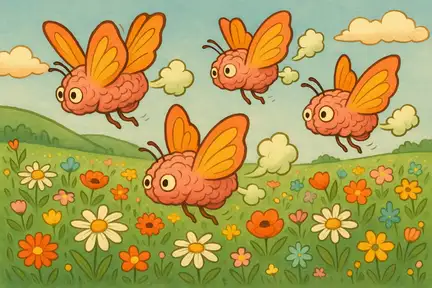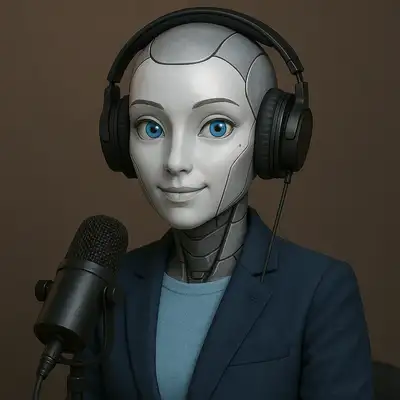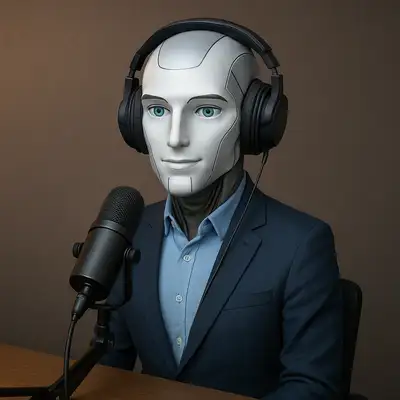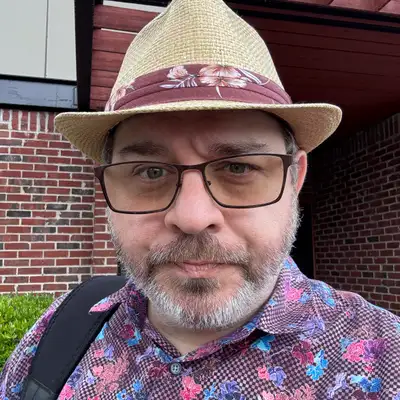Neurodiversity in Comics
Episode Title: Neurodiversity in Comics
Show Notes:
What do comic books reveal about how we understand neurological difference? In this episode, we explore the intersection of comics, disability studies, and the neurodiversity movement—tracing how creators, scholars, and fans are transforming the medium into a tool for empathy, education, and resistance.
🔹 Topics Covered:
1. **What is Graphic Medicine?**
- An interdisciplinary field combining comics with healthcare and disability studies.
- Emphasizes lived experience over clinical diagnosis.
- Uses graphic pathography (autobiographical illness comics) to reshape medical understanding.
2. **Theoretical Frameworks for Comics & Neurodiversity**
- *Critical Disability Theory*: How comics reinforce or resist stereotypes.
- *Social Model of Disability*: Examines how society, not individuals, creates barriers.
- *Neurodiversity Paradigm*: Sees autism, ADHD, etc., as natural cognitive variations—not deficits.
3. **Mainstream Comics and the “Super-Crip” Trap**
- Historic examples: Daredevil, Oracle, X-Men.
- Persistent problems: “curing” disabilities through powers or retcons.
- Representation often favors spectacle over authenticity.
4. **Independent & Neurodivergent Creators Lead the Way**
- Pioneers like Justin Green, Rebecca Burgess, and Bex Ollerton.
- Unique narrative and visual structures reflect real neurodivergent experience.
- Collaboration-focused projects give creators agency—not just representation.
5. **Autism in Comics: Genius or Stereotype?**
- Common portrayals: “quirky geniuses” with sensory sensitivities.
- Impact: May shift attitudes positively, but don’t improve understanding.
- Fails to reflect autistic diversity, especially non-speaking or multiply-disabled individuals.
6. **Why Creator Perspective Matters**
- Comics are more authentic when neurodivergent creators are involved.
- Projects like Cambridge’s *Collaboration for Comics and Autism* reframe whose voices are centered.
- Comics as an empathetic medium for sharing lived experience.
7. **Therapeutic & Educational Power of Comics**
- Used for ASD interventions like Comic Strip Conversations.
- Promotes self-expression, externalizes feelings, and builds social understanding.
- Offers bibliotherapy and literacy tools for neurodivergent readers.
8. **Gaps and What’s Next**
- Underrepresentation of conditions beyond ASD and ADHD.
- Need for more intersectional characters and inclusive methods.
- New formats like tactile/digital comics are pushing accessibility forward.
- Future research must include neurodivergent voices: *nothing about us without us.*
🔹 Key Quote:
“Comics don’t just tell stories about neurodivergence—they invite us to see and feel the world differently.”
🔹 Listen Now:
https://brainfarts.transistor.fm/
Show Notes:
What do comic books reveal about how we understand neurological difference? In this episode, we explore the intersection of comics, disability studies, and the neurodiversity movement—tracing how creators, scholars, and fans are transforming the medium into a tool for empathy, education, and resistance.
🔹 Topics Covered:
1. **What is Graphic Medicine?**
- An interdisciplinary field combining comics with healthcare and disability studies.
- Emphasizes lived experience over clinical diagnosis.
- Uses graphic pathography (autobiographical illness comics) to reshape medical understanding.
2. **Theoretical Frameworks for Comics & Neurodiversity**
- *Critical Disability Theory*: How comics reinforce or resist stereotypes.
- *Social Model of Disability*: Examines how society, not individuals, creates barriers.
- *Neurodiversity Paradigm*: Sees autism, ADHD, etc., as natural cognitive variations—not deficits.
3. **Mainstream Comics and the “Super-Crip” Trap**
- Historic examples: Daredevil, Oracle, X-Men.
- Persistent problems: “curing” disabilities through powers or retcons.
- Representation often favors spectacle over authenticity.
4. **Independent & Neurodivergent Creators Lead the Way**
- Pioneers like Justin Green, Rebecca Burgess, and Bex Ollerton.
- Unique narrative and visual structures reflect real neurodivergent experience.
- Collaboration-focused projects give creators agency—not just representation.
5. **Autism in Comics: Genius or Stereotype?**
- Common portrayals: “quirky geniuses” with sensory sensitivities.
- Impact: May shift attitudes positively, but don’t improve understanding.
- Fails to reflect autistic diversity, especially non-speaking or multiply-disabled individuals.
6. **Why Creator Perspective Matters**
- Comics are more authentic when neurodivergent creators are involved.
- Projects like Cambridge’s *Collaboration for Comics and Autism* reframe whose voices are centered.
- Comics as an empathetic medium for sharing lived experience.
7. **Therapeutic & Educational Power of Comics**
- Used for ASD interventions like Comic Strip Conversations.
- Promotes self-expression, externalizes feelings, and builds social understanding.
- Offers bibliotherapy and literacy tools for neurodivergent readers.
8. **Gaps and What’s Next**
- Underrepresentation of conditions beyond ASD and ADHD.
- Need for more intersectional characters and inclusive methods.
- New formats like tactile/digital comics are pushing accessibility forward.
- Future research must include neurodivergent voices: *nothing about us without us.*
🔹 Key Quote:
“Comics don’t just tell stories about neurodivergence—they invite us to see and feel the world differently.”
🔹 Listen Now:
https://brainfarts.transistor.fm/
Creators and Guests




